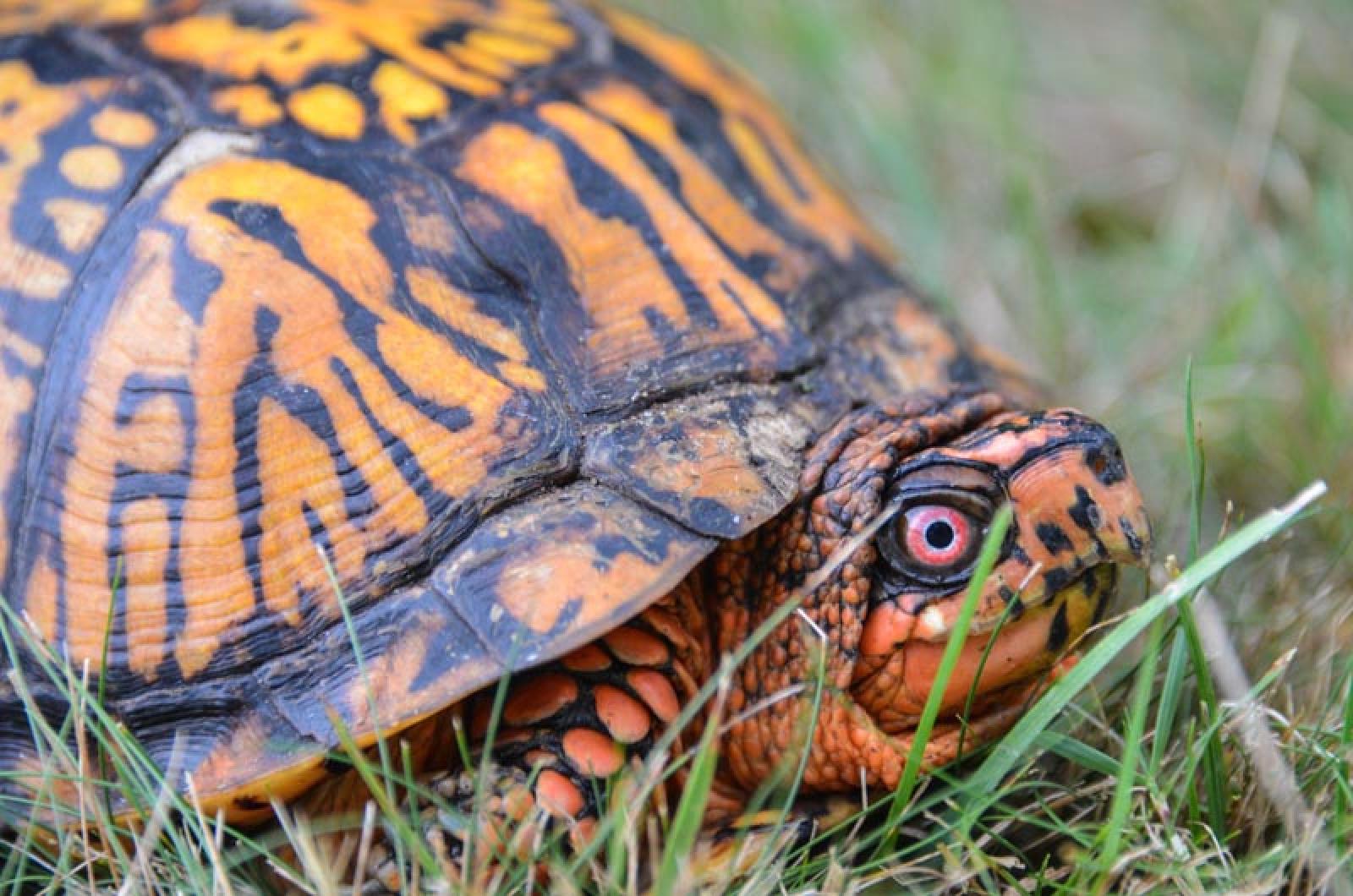Now is a good time to be like a box turtle.
Box turtles don’t go far from home. They are animals with small home ranges. During its entire life, a box turtle’s whole world encompasses an area approximately the size of two football fields.
Home range is the term used to describe the space in which an individual animal spends its time and finds all the resources needed for survival. The term was coined by 20th-century American zoologist William Henry Burt, who was noted for his books on mammals and his collection of their baculums.
Though they say home is where the heart is, animals know that home is really where the resources are. To thrive, animals need food, water and shelter, of course, but also require a place to find a mate, breed, care for young and escape predators. Food availability and other resources, density of population, competition and position in hierarchy are all factors that determine home ranges in different species.
Author, wildlife artist and chairman of the founding committee of Boy Scouts of America, Ernest Thompson Seton, explains, “No wild animal roams at random over the country; each has a home-region, even if it has not an actual home.”
Some animals have a den, nest or other base at the center of their home range while others do not.
The size of an animal’s home range can depend on many factors. Body size can be one — larger animals generally have larger home ranges. Food choice is also a factor. Herbivores have smaller home ranges than omnivores of the same size, and omnivores have smaller home ranges than carnivores of the same size. This is because the prey of carnivores is distributed more sparsely, so a larger area is needed to get the food these predators need.
Social systems also matter, as does the sex of an animal. Male voles, who take care of their offspring, have larger home ranges than females, who stay close to and care for their young. Males’ more expansive range allows for the finding of additional females with which to mate.
The concept of territory is different from home range and includes the defense of an area against other animals. Territories are well-defined and often physically marked by the dominant animal. A territory is usually smaller than the animal’s home range.
Animals can be very attached to their home range and some will try to return to their original locale if moved. This is one reason that relocating wildlife is not advised. Take that box turtle as an example — if moved to another area it won’t be able to survive in the new place as it doesn’t know where its resources can be found. It has a homing instinct to try to get back to its natal location and can be injured or killed trying to return.
Scientists use different methods to learn about and track the home ranges of wildlife, including mark and recapture studies, radio telemetry and GPS transmitters. Studies have shown great variations in home ranges of different species. Snapping turtles need anywhere from four to 22 acres, rabbits one to 15 acres, deer one square mile, except during the rut when they travel further afield, raccoons require one to four miles, and squirrels can survive in a few 100 yards if food is plentiful, though these ranges are widely dependent on resources and habitat.
My home range has decreased dramatically in the last week and I hope that yours has as well. Aspire to reduce it even more, since the smaller our home ranges, the better our chances for reducing the range of humanity’s newest predator.
Suzan Bellincampi is director of the Felix Neck Wildlife Sanctuary in Edgartown, and author of Martha’s Vineyard: A Field Guide to Island Nature and The Nature of Martha’s Vineyard.







Comments
Comment policy »